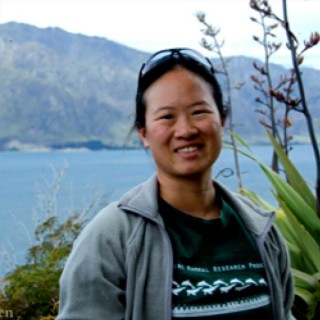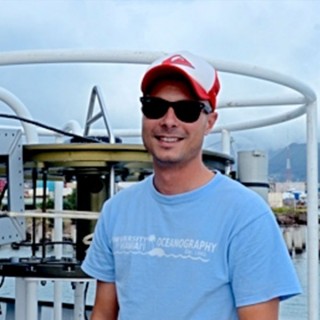Aloha from the sea! Today we cast off, leaving Honolulu to head toward Kona. The trip takes about 12 hours to complete sailing at 10 knots (about 11.5 miles per hour). In the morning, after leaving the harbor, all the Marine Mammal Observers trained on the monkey island—also known as the flying bridge. Everyone practiced sighting marine mammals using the binoculars and cameras. It was an exciting first training for many because we had plenty of humpback whales to practice on. Someone remarked you couldn’t go five minutes without seeing a humpback whale blow, which looks like a cloud of mist. We were lucky enough to see mother-calf pairs, some spectacular breaches, and even a couple calves tail slapping.
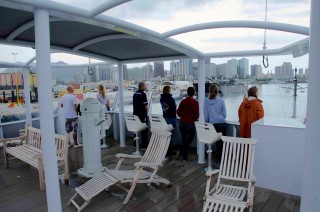
Humpback whales are famous for their songs. Try to imagine how much singing was going on while we were watching all these humpbacks. It would have been incredible to be able to put our heads in the water for a listen. This is essentially what we will be doing later with equipment (see video below). As far as scientists know, only male humpback whales sing. No one knows why. One hypothesis (an idea we try to test) is that males are singing to each other to compete to be the best and strongest; another thought is that males are singing to attract females. Since February and March are the peak of humpback season here in Hawaii, we are sure to see plenty of both males and females.
Spotted Dolphins Spotted
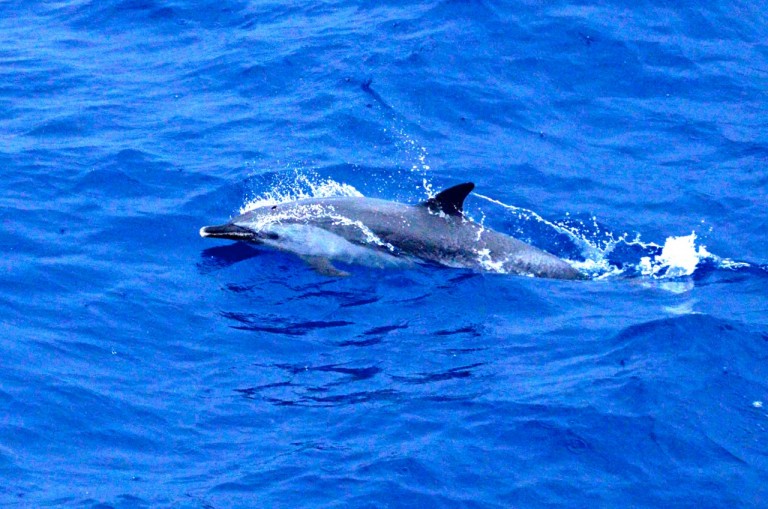
We also sighted pantropical spotted dolphins. Some spent time swimming along the bow, while others surfed the wake. They lost interest after a short 5 minutes and left the ship almost as fast as they had arrived. It was still an exciting first sighting for everyone on board.
A Seminar at Sea was held after lunch for both the scientists and the crew. After going over the goals of the cruise, each scientist talked about what they do when they are not on Falkor. We found out that several of us researched land animals before switching over to marine biology, including ground squirrels, city rats, and lizards. That showed everyone it is possible to change your mind on what you want to study until you find what you really love doing. The talk illustrated how much we love studying the ocean.
Ready for Action
The rest of the day we spent making sure everything was set up and ready to go. This included a lot of testing and deployment planning with the DIDSON, a special type of sonar that will allow us to see what kinds of animals are found where whales feed (see video above for more details). The marine technicians Leighton and Colleen were really helpful with this important step before our first drop at midnight. The DIDSON must be in the water to run, so we tested it in a full sink in the appropriately named wet lab. This allowed us to turn it on and off and to make sure everything was working properly before the real action later tonight.
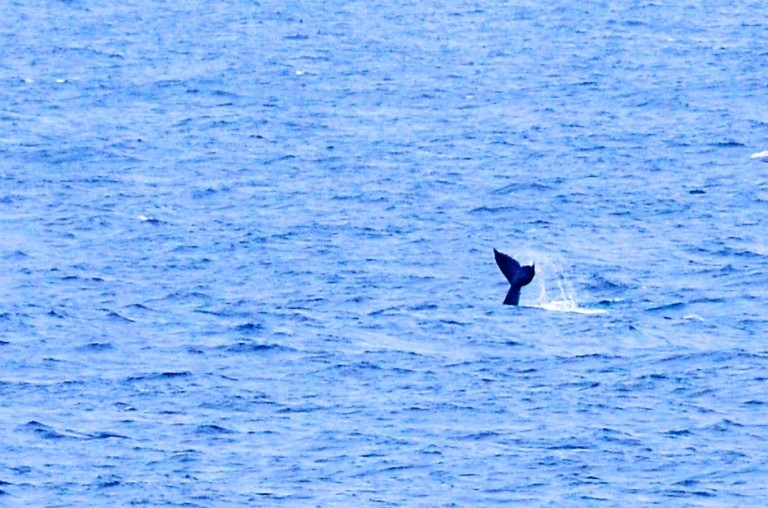
We also tested an Ecological Acoustic Recorder (EAR) buoy. This is an underwater sound recorder that will listen for whales feeding. We mounted the EAR and the DIDSON together on a frame and made sure everything was secure because the equipment is very expensive and we definitely don’t want to lose anything. All the tests turned out great, and we are ready for the first launch from the Falkor. It looks like the next 5 days on board will be full of great research.
